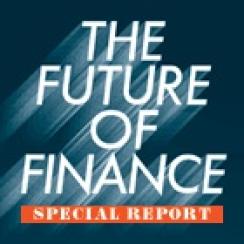
But because they must methodically process and account for what happens up front, financial institutions are also back-office factories. That is where the costs are: in massive computer centers that keep money and documentation flowing, and in armies of personnel to operate and maintain the machines and to deal with the inevitable errors and exceptions the assembly line spits out.
In stark contrast to front offices, these factories have long suffered from underinvestment. The securities industry’s posttrade infrastructure is a case in point. It strained to keep up with the complexities of derivative instruments and the speed and sophistication of trading systems. “There was no competitive advantage” in back-office operations, observes Nicolas Rohatyn, former head of e-commerce incubation initiatives at J.P. Morgan & Co., who now runs an emerging-markets asset management firm, New York–based Rohatyn Group.
The 2008 crisis changed that perspective. It exposed operational deficiencies and risks, most notoriously in banks’ inability to calculate their exposures to credit derivatives counterparties. Scrutiny by regulators and heightened awareness among institutional investors helped awaken Wall Street to the need to modernize. Cristóbal Conde, retired CEO of financial technology conglomerate SunGard Data Systems, says automating and streamlining posttrade tasks such as reconciliation and exception processing amounts to “finishing the job. It can yield incredible efficiencies.”
Adds Rohatyn, “The willingness to embrace solutions in that part of the trade cycle” makes it ripe for innovation.
Pulling off that trick is complicated, though. Robert Gach, global head of the capital markets practice at consulting firm Accenture, points out that a typical large financial institution has to wrestle with a legacy infrastructure of 30 to 40 posttrade technology platforms and at least as many customer databases because of its heritage of “siloed” businesses and product lines.
Regulatory changes and client demands are “putting tremendous pressure on the operating models of financial markets firms,” according to a report published last month by brokerage servicer Broadridge Financial Solutions and IBM Corp.’s Center for Applied Insights. Saddled with legacy systems, firms working to comply with regulatory mandates and meet clients’ rising expectations “have little left to invest in change-the-business initiatives that could create competitive advantage,” the report says.
Solutions are emerging in service-oriented technology architectures — such as software as a service, or SaaS — that overcome the incompatibilities and lower the costs of legacy systems; in outsourcing to processors like Broadridge, which handles $4 trillion of trades a day and can bring economies of scale to bear; and in entrepreneurial ventures.
“For innovation to happen you have to have a problem to solve,” and posttrade operations have long been riddled with challenges, says P. Howard Edelstein, a veteran technology executive and investor who in the 1990s founded Thomson Financial Electronic Settlements Group, the pioneer in automating trade confirmations. That business is now part of Omgeo, a posttrade services joint venture of Thomson Reuters and Depository Trust & Clearing Corp. (DTCC) that operates globally and has recently branched out from equity and fixed income into derivatives. An operating partner of private equity firm Advent International Corp., Edelstein is at home in posttrade and other behind-the-scenes niches that he views as levers of “innovation and transformation at the industry level.” He is currently executive chairman of bond distribution and trading platform BondDesk Group and sits on boards that include those of AcadiaSoft, which automates collateral management and margin calls, and database aggregator Alacra.
Posttrade provided an entry point for Markit Group, which started out in 2001 within TD Securities in London as a provider of credit derivatives valuations. Markit was spun out in 2003 to a bank consortium. Two years later it became a major over-the-counter trade processor by buying Communicator (now part of MarkitSERV, another joint venture of industry utility DTCC’s), one of a string of acquisitions that has made Markit a leading innovator in financial information systems and services.
London-based interdealer brokerage ICAP has not only made a major push into posttrade services, but in 2011 it formed Euclid Opportunities to provide seed funding and incubation assistance to start-ups in the field. “Recently, a lot of technology innovation has gone into the social networking and consumer space, and away from financial services,” says Euclid head Steve Gibson, who says he has met with more than 200 early-stage companies over the past year and a half. “We see some of that technology coming back into financial services.”
In August, ICAP and Euclid took part in a $15 million Series C funding round for London-based OpenGamma. The three-year-old company’s analytics platform for trading and risk management, based on open-source software, is a potential “de facto standard for risk management,” says Mark Beeston, CEO of ICAP’s £208 million-in-revenue ($329 million) posttrade risk and information business. OpenGamma won the title of top innovator for the European region in the Innotribe Startup Challenge, a competition sponsored by the Belgium-based Swift financial communications network, and will be one of 15 finalists vying for the global prize at Swift’s annual Sibos convention, to be held in October in Osaka, Japan.





